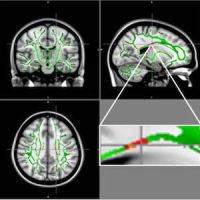A study of more than 135 million imaging exams, published in the Journal of the American Medical Association, has shown that computerised tomography (CT), magnetic resonance imaging (MRI) and other scans have been increasing in use. Researchers from UC San Francisco, UC Davis and Kaiser Permanente showed that despite efforts to reduce imaging in medicine its overuse still seems to be prominent.
The study analysed medical imaging examinations between 2000 and 2016 for 16-21 million patients, both adults and paediatrics. Imaging rates from the U.S. and Ontario, Canada were compared from seven different healthcare systems. A mixture of data from fully integrated health systems and mixed services were used for U.S. analysis.
Results showed that the use of imaging began to slow at the beginning of the 2000s, however, this has continued to rise particularly in CT and MRI use. CT scans use high ionising radiation doses whereas MRI uses a magnetic field and radio waves to generate images of the inside of the body.
Rebecca Smith-Bindman, MD, lead author of the study, explained that whilst imaging is important for diagnoses, it can also have a damaging effect on the patient. Patients can experience anxiety, radiation exposure, overdiagnosis and more from undergoing imaging scans. Smith-Bindman stressed that it is important to ensure that imaging use is justified.
It was previously assumed that imaging use was decreasing, but the study identified that CT and MRI use in adults was accelerating again, leaving more patients at risk of cancer induced by radiation.
Diana Miglioretti, PhD, senior author on the study, said the results are still hopeful as CT imaging in children was decreasing. However, Miglioretti explained that U.S. health systems can still do better as the results for paediatric CT scans were lower in Ontario.
Key takeaways from the study:
- CT, MRI and ultrasound imaging was at its highest between 2000 and 2006, which has steadily grown over the years.
- 2012-2016 there was 1-5% growth each year in both the U.S. and Ontario.
- From 2009-2013 CT use decreased for children in the U.S. and has been stable since 2013, numbers reduced for this cohort in 2006 in Ontario.
- There is a higher imaging rate of use in the U.S. compared to Ontario, however, this gap is reducing.
- Eg for older adults in 2016:
- U.S.: 51 MRIs per 1000 patients
- Ontario: 32 MRIs per 1000 patients
- Imaging use increased shortly after decreasing.
- eg the rate of increase was:
- 2000-2005: 95%
- 2006-2011: 0.9%
- Last 5 years: 3%
- Slightly higher rates for imaging use for mixed services compared to fully integrated services.
Many initiatives have been implemented to help tackle the problem of imaging overuse, for example, the ‘Choose Wisely’ campaign by the American Board of Internal Medicine Foundation in 2012. However, from this recent study, it can be suggested that campaigns such as these have not been completely successful. Smith-Bindman urged that to move forward, more evidence-based guidelines need to be implemented within the health care system to prompt the careful consideration of imaging use.
Image Credit: iStock
Latest Articles
CT, MRI, Ultrasound, UC Davis, Kaiser Permanente, Ontario, Magnetic Resonance Imaging, CT Imaging, computerised tomography, UC San Francisco, Medical Imaging Rates Continue to Rise, medical imaging examinations, Rebecca Smith-Bindman, Diana Miglioretti, American Board of Internal Medicine Foundation
A study of more than 135 million imaging exams, published in the Journal of the American Medical Association, has shown that computerized tomography (CT), magnetic resonance imaging (MRI) and other scans have been increasing in use.



























